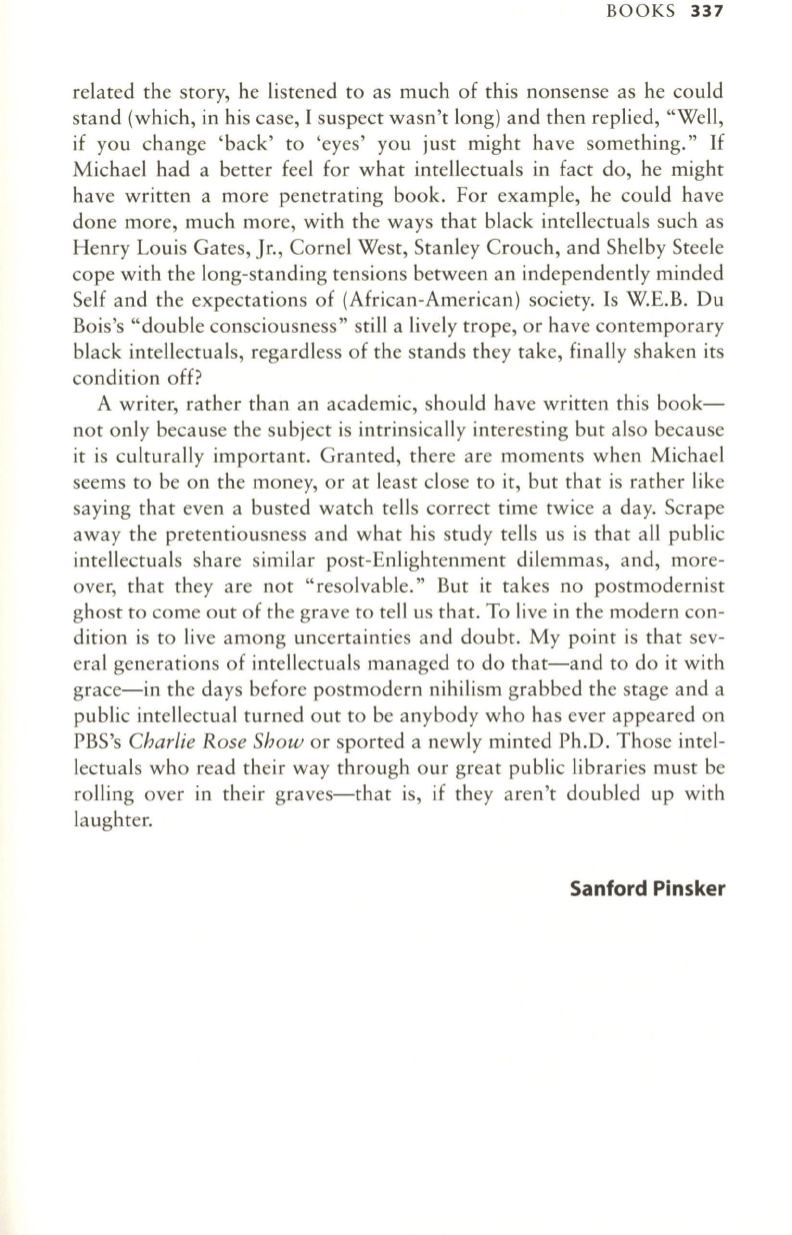
BOOKS
337
related the story, he listened to as much of this nonsense as he could
stand (which, in his case, I suspect wasn't long) and then replied, "Well,
if you change 'back' to 'eyes' you just might have something."
If
Michael had a better feel for what intellectuals in fact do, he might
have written a more penetrating book. For example, he could have
done more, much more, with the ways that black intellectuals such as
Henry Louis Gates, Jr., Cornel West, Stanley Crouch, and Shelby Steele
cope with the long-standing tensions between an independently minded
Self and the expectations of (African-American) society. Is W.E.B. Du
Bois's "double consciousness" still a lively trope, or have contemporary
black intellectuals, regardless of the stands they take, finally shaken its
condition off?
A writer, rather than an academic, should have written this book–
not only because the subject is intrinsically interesting but also because
it is culturally important. Granted, there are moments when Michael
seems to be on the money, or at least close to it, but that is rather like
saying that even a busted watch tells correct time twice a day. Scrape
away the pretentiousness and what his study tells us is that all public
intellectuals share similar post-Enlightenment dilemmas, and, more–
over, that they are not "resolvable." But it takes no postmodernist
ghost to come out of the grave to tell us that. To live in the modern con–
dition is to live among uncertainties and doubt. My point is that sev–
eral generations of intellectuals managed to do that-and to do it with
grace-in the days before postmodern nihilism grabbed the stage and a
public intellectual turned out to be anybody who has ever appeared on
PBS's
Charlie Rose Show
or sported a newly minted Ph.D. Those intel–
lectuals who read their way through our great public libraries must be
rolling over in their graves-that is, if they aren't doubled up with
laughter.
Sanford Pinsker


